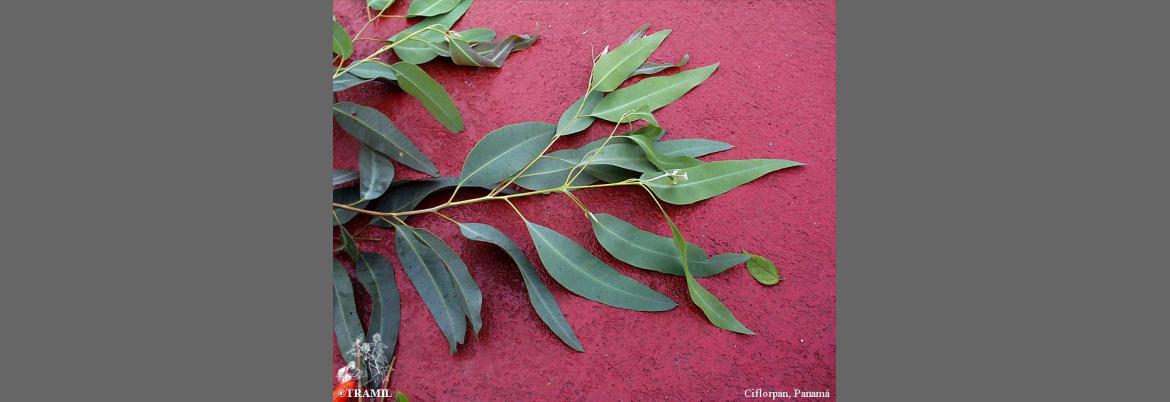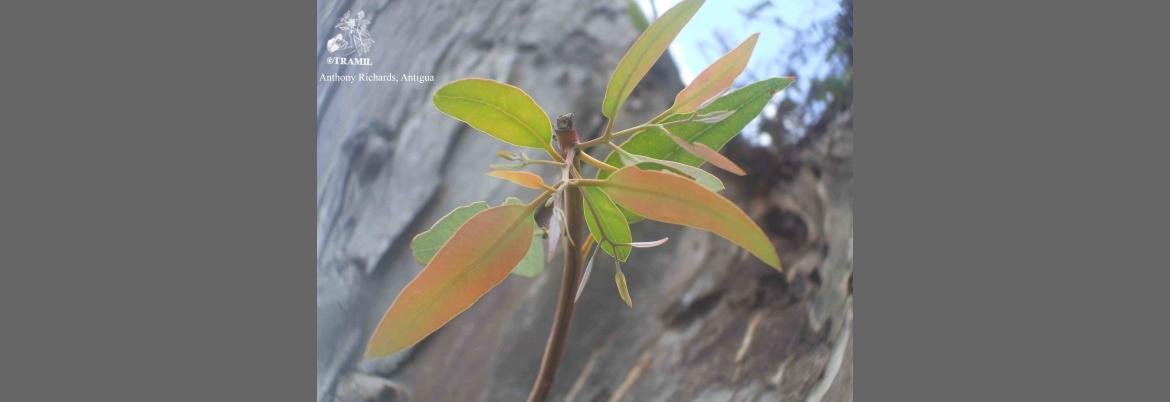1 LAGOS-WITTE S, 1988-89, 1996 Encuesta TRAMIL. Laboratorio de Histología Vegetal y Etnobotánica, Dep. de Biología, Universidad Nacional Autónoma de Honduras UNAH, Tegucigalpa, Honduras.
2 GOMEZ H, GAITAN R, DIAZ F, 2003 Encuesta TRAMIL (Norte del departamento de Bolívar). Grupo de Productos Naturales, Facultad de Ciencias Químicas y Farmacéuticas. Universidad de Cartagena, Cartagena de Indias, Colombia.
3 PDR for Herbal Medicines, 2003 Eucalyptus globulus. The PDR® for Herbal Medicines, PDR Electronic Library, Medical Economics Company, PhytoPharm US Institute for Phytopharmaceuticals, Metuchen, USA, Feb.28,2003. URL: http://www.mdcc.edu/medical/library/catalog2.htm
4 SOOD VK, RIER JR JP, GHOSH RC, 1987 A gas-liquid chromatograph analysis of oil from young and old leaves of Eucalyptus citriodora Hooker. Parfuem Kosmet 68(8):495-498.
5 FERNANDEZ RR, SURI RK, 1981 Studies on the oil of Eucalyptus citriodora Hook, grown at Dehra Dun. Indian Forestry 107(4):243-248.
6 SHEN YB, YU Z, 1986 Chemical constituents of Eucalyptus citriodora leaves. Part I. Linchan Hua Hsueh Yu Gong Yi 6(3):28-31.
7 ATAL CK, SRIVASTAVA JB, WALI BK, CHAKRAVARTY RB, DHAWAN BN, RASTOGI RP, 1978 Screening of Indian plants for biological activity. Part VIII. Indian J Exp Biol 16:330-349.
8 BRANTNER A, GREIN E, 1994 Antibacterial activity of plant extracts used externally in traditional medicine. J Ethnopharmacol 44(1):35-40.
9 GILBERT B, MORS W, BAKER P, TOMASSINI T, COULART E, DE HOLANDA J, RIBEIRO DA COSTA J, LOPES J, DOS SANTOS FILHO D, SARTI S, TURCO A, 1972 Anthelminthic activity of essential oils and their chemical components. An Acad Brasil Cienc Suppl 44:423-428.
10 MEYER F, MEYER E, 1959 Percutaneous absorption of essential oils and their constituents. Arzneim-Forsch 9(8):516-519.
11 PARIS R, MOYSE H, 1981 Précis de Matière Médicale. Paris, France: Ed. Maloine.
12 GARNIER G, BEZANGER-BEAUQUESNE L, 1961 Ressources médicinales de la flore française. Paris, France: Ed. Vigot Frères.
13 BURROW A, ECCLES R, JONES A, 1983 The effects of camphor, eucaliptus and menthol vapour on nasal resistance to airflow and nasal sensation. Acta Otolaringol (Stockholm) 96(1-2):157-161.
14 DUKE J, 1992 Handbook of biologically active phytochemicals and their bioactivities. Boca Raton, USA: CRC Press.
15 ASWAL B, BHAKUNI D, GOEL A, KAR K, MAHROTRA B, MUKHERJEE K, 1984 Screening of Indian plants for biological activity: Part X. Indian J Exp Biol 22(6):312-332.
16 DHAR ML, DHAR MN, DHAWAN B, MEHROTRA B, SRIMAL R, TANDON J, 1973 Screening of Indian plants for biological activity: Part IV. Indian J Exp Biol11:43-54.
17 DUKE J, 1977 Phytotoxin tables. Crc Crit Rev Toxicol 5:189-237.
18 ANON, 1988 Eucalyptus citriodora oil. Food Chem Toxicol 26(4):323.
19 PAGES N, FOURNIER G, LE LUYER F, MARQUES M, 1990 The essential oils and their potential teratogenic properties: Example of the essential oils ofEucalyptus globulus preliminary study with mice. Plant Med Phytother24(1):21-26.
20 DUKE J, 1988 Handbook of Medicinal Herbs. Boca Raton, USA: CRC Press.
21 SPOERKE DG, VANDENBERG SA, SMOLINSKE SC, KULIG KK, RUMACK BH, 1989 Eucaliptus oil, 14 cases of exposure. Vet Hum Toxicol 31(2):166-168.
22 CARBALLO A, 1995 Cálculo de concentración y dosis de las drogas vegetales TRAMIL: Mensuraciones farmacognósticas y aproximaciones técnico-clínicas. Laboratorio Provincial de Producción de Medicamentos, Sancti Spiritus, Cuba.
23 KOSSMANN I, VICENTE C, 1992 Salud y plantas medicinales. Buenos Aires, Argentina: Editorial Planeta Tierra. p113-115.














